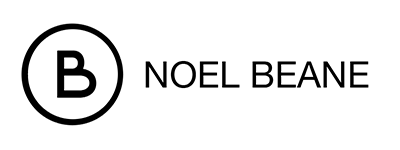Strategy: Generative AI
Generative AI
Design Intelligent Prompts
Let’s talk about prompts. No, not the kind you need to remember your anniversary or pick up milk on the way home. I’m talking about prompts for generative AI tools—the kind of tools that are reshaping how we think, create, and design in the Age of AI. If you’re a product designer like me, you’ve probably noticed the buzz around AI lately. But here’s the thing: knowing how to write effective prompts for these tools isn’t just some trendy hack—it’s quickly becoming an essential skill, right up there with wire framing, user research, and prototyping
Why Prompts Matter
Think of a prompt as your way of communicating with AI. It’s not magic; it’s a conversation. A well-crafted prompt tells the AI what you want, how you want it, and sometimes even why you want it. Whether you’re generating design concepts, brainstorming product names, or drafting UX copy, the quality of your input directly affects the quality of the output. Garbage in, garbage out, right?
But here’s where it gets interesting: writing prompts isn’t just about asking for something—it’s about asking *smartly*. It’s about understanding how these tools “think” (or at least how they process information) and tailoring your approach to get results that are actually useful.
The New Design Superpower
Let’s put this into perspective. Writing prompts for AI is a lot like sketching in your notebook or mocking up screens in Figma. It’s a tool you use to explore ideas, iterate quickly, and solve problems creatively. And just like any design skill, it takes practice to master.
Think about user research for a second. In user interviews, you don’t just ask vague questions like “Do you like this app?” You dig deeper: “What specific tasks do you find difficult when using this app?” Writing prompts is similar—you need to be clear, specific, and intentional to get meaningful results.
Or consider prototyping. When you build a prototype, you’re not just throwing random elements together; you’re crafting something that communicates an idea or tests a hypothesis. Writing prompts is no different. It’s about creating a framework that guides the AI toward producing something valuable.
Why You Should Care
The Age of AI isn’t coming—it’s already here. And as product designers, we’re not just designing for humans anymore; we’re designing in collaboration with machines. Knowing how to write prompts effectively gives you an edge—it’s like having a creative partner who never sleeps and has infinite patience for iteration.
But beyond the practical benefits, there’s a philosophical shift happening here too. Learning to work with AI tools challenges us to rethink what it means to be creative. It forces us to focus on strategy, vision, and problem-solving—the things machines can’t do (yet). In other words, it makes us better designers.
How to Get Started
If you’re new to prompt writing, don’t sweat it—it’s not as intimidating as it sounds. Start small. Play around with tools like ChatGPT, MidJourney, or Claude AI and experiment with different ways of phrasing your requests. Pay attention to what works and what doesn’t. Over time, you’ll start to notice patterns and develop your own “prompting style.”
And remember: this isn’t about replacing your existing skills—it’s about enhancing them. Writing prompts is just another tool in your design toolkit, one that can help you work faster, think bigger, and create better products.
Key Take Aways
In a world where technology evolves faster than we can keep up, adaptability is everything. As product designers, our job is to stay curious, keep learning, and embrace new ways of working. Writing prompts for generative AI might feel like a small thing now, but trust me—it’s going to be huge.
So go ahead—dive in, experiment, and see what happens when you combine your design expertise with the power of AI. Who knows? You might just discover your next big idea in the process.
The ROI of Design
Conversion
94%
of a user’s first impressions are design related
Loyalty
75%
judge a company’s credibility based on design
Retention
88%
of users are less likely to return to a website after a bad user experience

